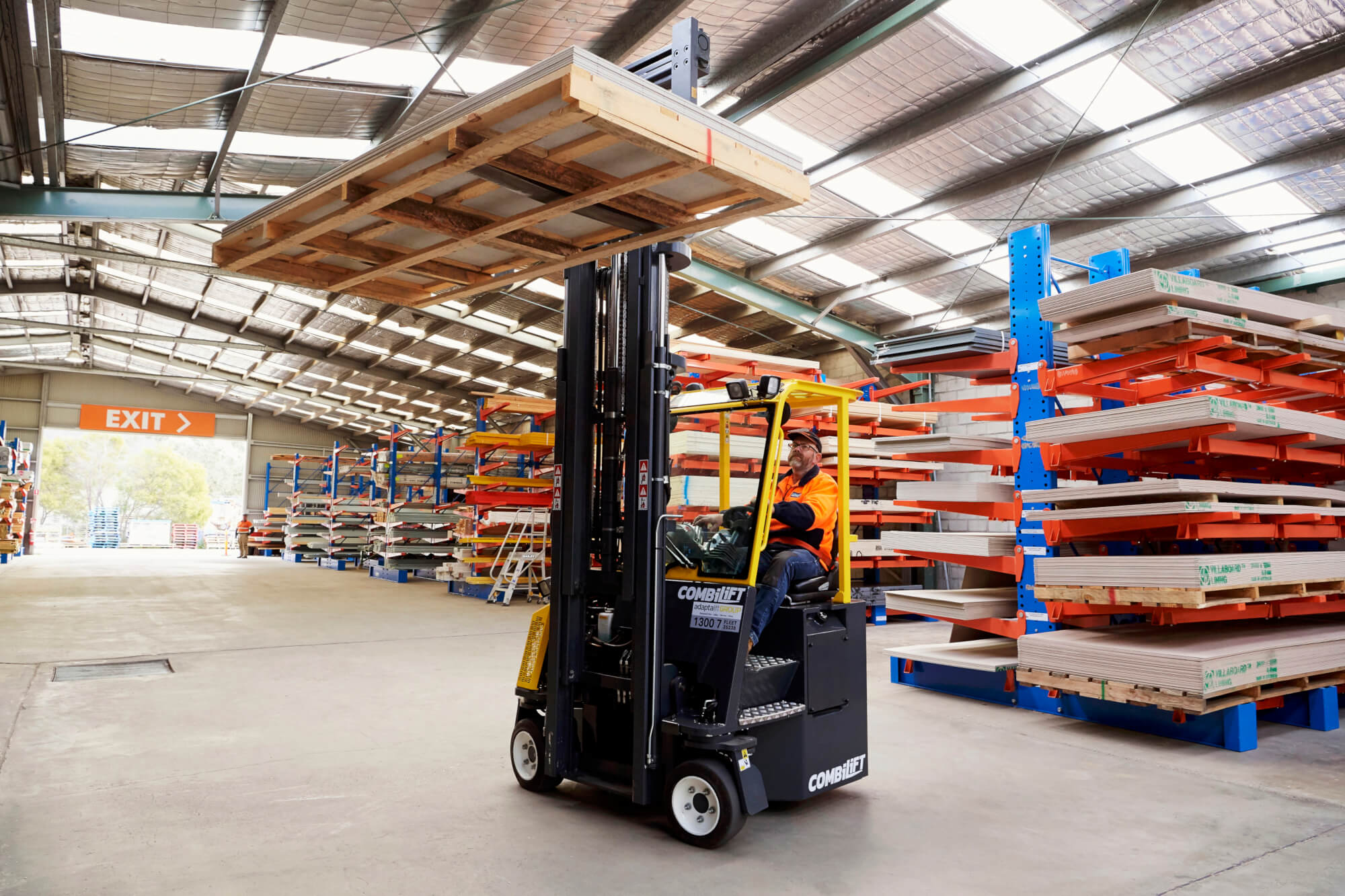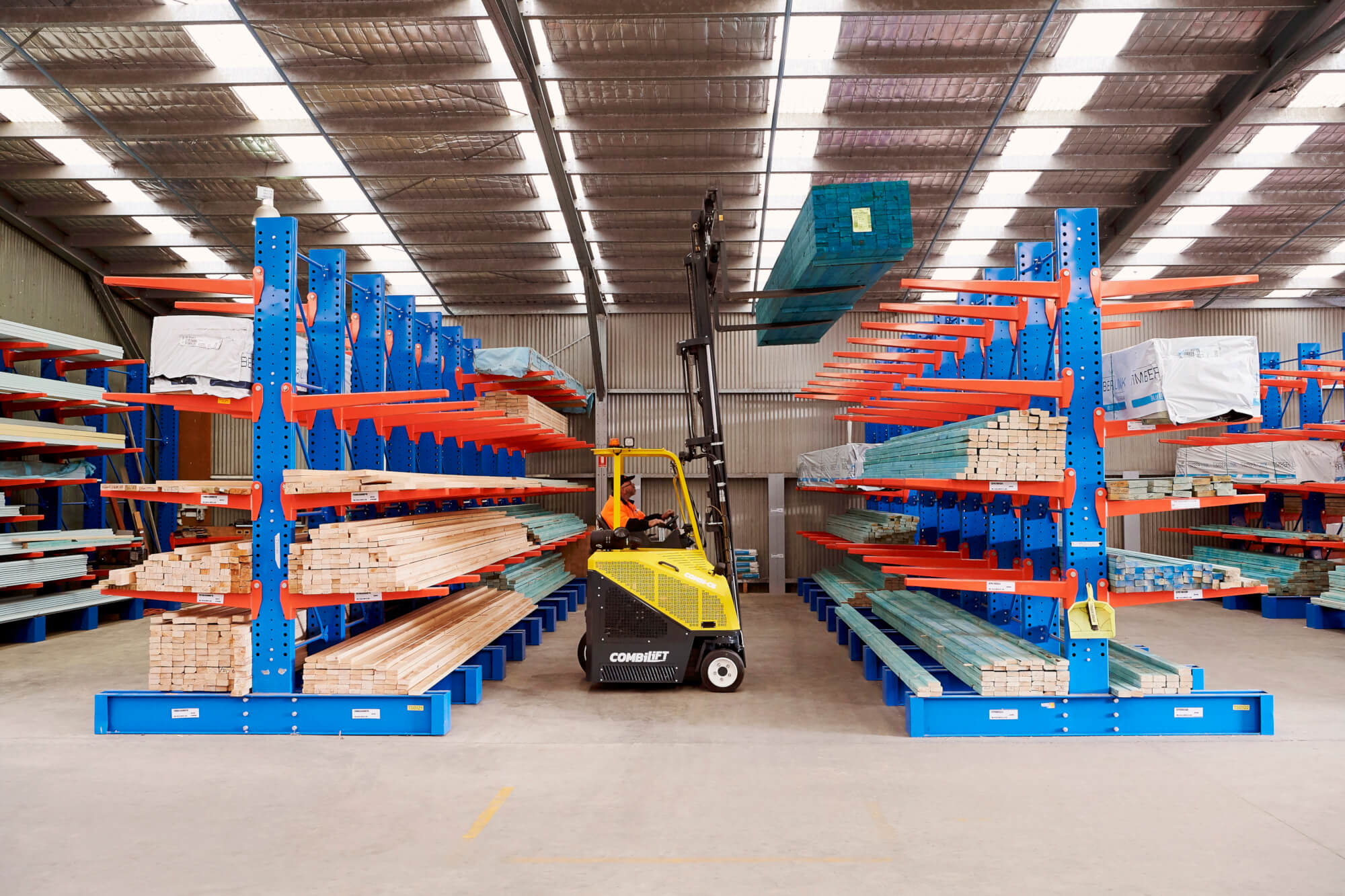

Whether it be in a manufacturing facility, a warehouse or a customer area with high pedestrian footfall, workplace safety is at the top of the list when it comes to handling and storing long, heavy or oversized loads. Moving these types of items around warehouses can often be fraught with danger. However, by utilizing the right equipment and storage options, companies can not only improve the safety of their facilities but enhance productivity, speed of operations and increase storage capacity.
From June 17th -24th Combilift, together with many of its customers, took time out to reflect on National Forklift Safety Week and like many companies took the opportunity to look at how they were implementing safety best-practice and ensuring the wellbeing of staff. Martin McVicar, the CEO and Co-founder of Combilift, connected with Steve Pulbrook, Director of the Gubbins Pulbrook chain of Mitre 10 stores in NSW to discuss the importance of forklift safety within their own organizations.

In starting his conversation with Steve, Martin McVicar, Irish-based Combilift, spoke of his experiences of the implementation of forklift safety across the globe. “Of all the markets we do business in, and safety is of course important in all of these, a lot of safety procedures are implemented and the issue of safety is widely discussed, but in Australia, safety really is at the top of everyone’s agenda.” This focus on safety, according to McVicar, fits well with Combilift’s ethos of not manufacturing regular forklifts but manufacturing equipment specifically designed to carry long loads more safely and increase warehouse or production space.
McVicar went on to describe a number of products within the Combilift range, notably the Combilift pedestrian units, which incorporate Combilift’s patented multi-position tiller arm. Combilift’s standard pedestrian units capable of handling loads from 800kg up to 16 tonnes, are not the first pedestrian forklifts on the market, but are unique in that they can operate in narrow aisle widths and “the operator does not have to stand behind the unit when operating it.” In other words, the operator can stand at an offset position, “has clearer visibility of the forks and is not in that area between the truck and the racking which is a potential crush zone.”
When discussing the importance of moving long and bulky loads with ride-on forklifts however, McVicar turned Pulbrook to talk of his own experience in improving safety within his own organization. Pulbrooks’s Mitre 10 utilize the Combilift C-Series and CB range of multidirectional forklifts.
Combilift C-Series and CB Series units combine the advantages of three units into one. Thanks to their revolutionary design they’re able to operate as a sideloader, counterbalance or narrow aisle forklift depending on the task at hand.
The ability of the one Combilift unit to maneuver long loads sideways provides increased safety as it reduces the number of forklift movements and load handovers compared to using a counterbalance forklift to unload from a delivery truck and then a sideloader to navigate the load through a narrow warehouse door. Pulbrook noted that we redesignied our racking and storage to take advantage of the capabilities of the Combilift equipment, which is giving us more capacity inside and out… it’s been amazing. Once the operators have started using it, they can never go back.”


Pullbrook, a user of 4 Combilift CBs and C-Series models across 4 sites in the Southern Highlands of NSW agreed with Martin that “safety was a big driver. We’ve designed our timber yards around their use. We’re leaning toward the CB units and we’ve tailored the machine with wider fork positioners, which make it even safer for carrying long loads. Our whole system is designed around using those forklifts.” Pulbrook however was frank in saying that “initially it was economics that made us look toward Combilift – the cost of land and reducing aisle widths.”
On talking with McVicar however it was plain to see that his interest was not only in the safe use of forklifts on his customers’ sites but also forklift safety within his own facility. Combilift, which operates a 46,000sqm facility in County Monaghan, Ireland has put in place a number of safety features to reduce pedestrian interaction with mobile equipment.
An efficient and safe layout was very predominant in our layout thinking here. We laid out all our walkway and then we did a risk assessment to ask ourselves is that walkway in the right place where there are very few moving vehicles or should we move the walkway. In many cases we repositioned the walkways to where there were fewer moving vehicles, it allows us to segregate our 600 plus employees from all moving vehicles.
In closing McVicar again stressed that “Australia really does set the benchmark for safety and that forklift safety was a big part of that”
Find out more about Combilift and their commitment to safety at www.combilift.com


Gold Sponsors



